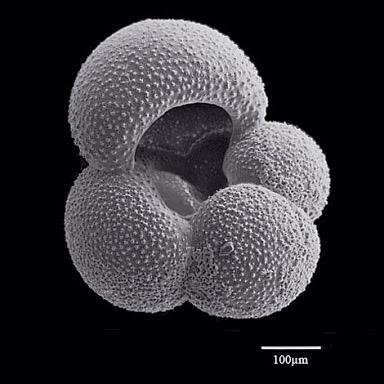Northeast Pacific
Bathed in the oldest, most corrosive deep waters, the Northeast Pacific is not the easiest place for paleoceanography. As the high corrosivity dissolves the carbonaceous foraminifera, so to dissolves the possibility of constructing age models. The Northeast Pacific has been stuck in a dead zone, but in 2014, new cores were collected from the Juan de Fuca Ridge, bathymetrically high enough to escape complete carbonate dissolution. These foram-rich cores provide the opportunity to investigate a host of classic paleoceanographic questions in this region over the past 500,000yrs, including mass fluxes, surface productivity, and ocean circulation.
Sedimentation, stratigraphy, and physical properties of sediment on the Juan de Fuca Ridge
Unlike in the open ocean, sedimentation on mid-ocean ridges like the Juan de Fuca can be influenced by sediment remobilization along the ridges' rough topography. I combined high resolution density and magnetic susceptibility records with benthic δ18O and coarse fraction to investigate whether the near-ridge environment responds to glacial-interglacial changes in climate and oceanography. Density and coarse fraction show clear glacial-interglacial cycles that mimic carbonate dissolution, but sedimentation rates are highly variable and primarily reflect sediment remobilization. This work was published in 2016.
Efficacy of 230Th normalization in sediments from the Juan de Fuca Ridge, northeast Pacific Ocean
230Th, like all constant flux proxies, is an indispensable method for reconstructing sedimentation rates and mass fluxes over time. Concerns have been raised, however, that 230Th systematics may be complicated by sediment focusing, grain size bias, sediment composition (CaCO3), and water column advection. The close proximity of the Juan de Fuca cores (<30km) suggests that they should receive the same vertical rain rate of sediment, but the steep bathymetry of the ridge leads to substantial sediment redistribution. This combination creates the optimal setting to study the effects of sediment focusing on 230Th systematics. This work was published in 2017.
Hydrothermal deposition on the Juan de Fuca Ridge over multiple glacial-interglacial cycles
Hydrothermal systems play an important role in modern marine chemistry, but little is known about how they may have varied on 100,000 year timescales. The Juan de Fuca cores are close enough to the ridge (<50km) to capture variability in hydrothermal activity over the past 500,000 years. I use high resolution records of metal fluxes (Cu and Fe) to reconstruct spatial and temporal variability in hydrothermal deposition on the ridge flanks. This work was published in 2017.
Radiocarbon and stable isotope evidence for changes in sediment mixing in the North Pacific over the past 30kyr
Deep-sea sediment mixing occurs on the seafloor everywhere that food and oxygen are sufficiently available. This bioturbation can be difficult to quantify, especially in the past, but radioactive tracer profiles can track changes in mixing over time. Radiocarbon profiles derived from the planktic foraminifera G. bulloides reveal long-lived age plateaus, caused by the upmixing of the much more abundant glacial specimens. Modeling the changes in sediment age as well as stable isotope (d18O) composition suggests that the most intense sediment mixing occurred in the Holocene, consistent with the highest food availability. This work has been accepted in Radiocarbon.
Trace element (Mn, Zn, Ni, V) and authigenic uranium (aU) geochemistry reveal sedimentary redox history on the Juan de Fuca Ridge, North Pacific Ocean
Changes in ocean circulation and water mass chemistry can be recorded by oxygen concentrations in the deep ocean. Because the deep Pacific is the largest ocean reservoir, its oxygen concentrations may be affected by global climate change, such as the glacial-interglacial cycles of the late Pleistocene. The contrasting behaviors of multiple redox-sensitive trace elements (Mn, Ni, Zn, V) and authigenic U (aU) can be combined to reconstruct changes in sedimentary oxygen conditions in the past. On the JdFR, oxygen concentrations are surprisingly higher during glacial periods, possibly due to reduced sulfide deposition during these intervals. This work is currently under review at GCA.






